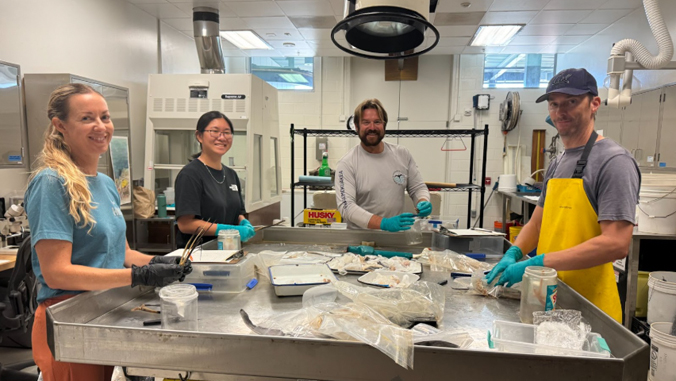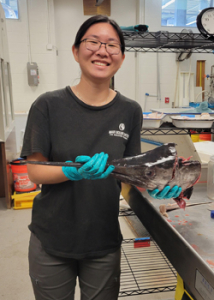
In high school, Maggie Chen realized she had the power to choose a career that allowed her to fight for the environment she grew up loving. After graduating from Mililani High School, that passion and care brought her to the University of Hawaiʻi at Mānoa’s Global Environmental Science (GES) bachelor’s program.
“I wanted to dedicate my career to caring for the land that has provided for me my whole life.” — Maggie Chen
Born on Oʻahu and raised in Central Oʻahu, Chen always had a great appreciation for the beauty of nature and wildlife, but learning about climate change and the detrimental environmental impacts of human activities cemented her commitment to protect what she loves.
“The concept of aloha ʻāina, or taking care of the land, was instilled in me throughout high school, and I decided that four-hour weekend work days with my environmental club weren’t going to cut it for me,” said Chen, who is in her second year of the GES program in the UH Mānoa School of Ocean and Earth Science and Technology (SOEST). “I wanted to dedicate my career to caring for the land that has provided for me my whole life. So, here I am in SOEST learning how to do just that.”
From land to sea

In summer 2024, Chen was selected for the Pacific Islands Climate Adaptation Science Center (PI-CASC) Summer Undergraduate Research Fellowship program. During the 10-week program, she worked at the National Oceanic and Atmospheric Administration’s (NOAA) Pacific Islands Fisheries Science Center (PIFSC) at the Inouye Regional Center on Ford Island, where she was introduced to fisheries science, specifically fish life history, which assesses fish age, growth and reproduction.
“I was assigned to two amazing mentors, Dr. Eva Schemmel from NOAA and Dr. Eileen Nalley from Hawaiʻi Sea Grant,” Chen shared. “I was fascinated to learn how much work goes into managing our fisheries, because while I love eating fish, I never really thought about the work that goes on to keep our fisheries sustainable and well-documented.”
Through her fellowship research, Chen processed samples of otoliths, or fish ear bones, from gindai, one species of the Deep 7 Bottomfish, the seven most culturally important and highly valued of the deep-water bottomfish species in Hawaiian waters. She also helped process samples of billfish, such as blue marlin, striped marlin and swordfish, for the International Billfish Biological Sampling program. Working at the NOAA facilities afforded Chen a variety of other experiences, such as visiting a tuna auction, watching a turtle necropsy, participating in monk seal watches, touring the NOAA ships and networking opportunities.
“Maggie has become a valued member of our team and goes above and beyond to contribute to all types of lab tasks, including fish biosampling processing and participating in community and public engagement events,” said Schemmel. “Her attention to detail and passion has shown through in her work. In fact, she has become an expert otolith processor, perhaps the best on our team, and we hope to continue to work with her in the future.”
Progress on research and career path
Now, as an undergraduate fisheries research assistant with Nalley, Chen is continuing the gindai life history project she began during the internship.
Chen expects to graduate in the spring of 2027 and hopes to pursue graduate school, and then ultimately her dream position as a biologist at NOAA.
Read the entire story on the SOEST website.
—By Marcie Grabowski

